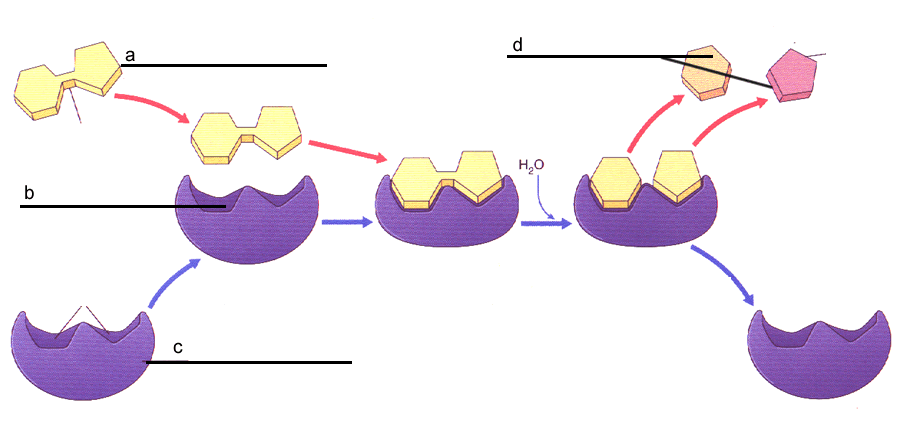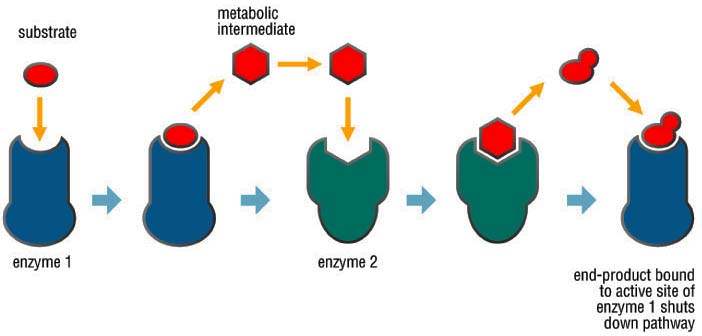Analyzing Graphics: Enzymes
1. Label the diagram

2. Answer true of false to the following statements:
a. _______ Enzymes interact with
specific substrates
b. _______ Enzymes change shape after a reaction occurs
c. _______ Enzymes speed up reactions.
d. _______ One enzyme can be used for many different types of chemical reactions.
e. _______ Enzyme reactions can be slowed or halted using inhibitors.
3. Circle the correct effect.
a. Raising the temperature slightly
will [ increase | decrease | not change ] the rate of reaction
b. Boiling temperature will [ increase | decrease | not change ] the rate of
reaction.
c. Changing the pH toward the optimal pH will [ increase | decrease | not change
] the rate of reaction.
d. Introducing a competitive inhibitor will [ increase | decrease | not change
] the rate of reaction.
4. Place a check mark next to the things that are expected to INCREASE the rate of an enzymatic reaction
a. ____ Add more enzyme
b. ____ Add more substrate
c. ____ Adjust pH to optimal level
d_____ Add a non competitive inhibitor
e.____ Add an allosteric inhibitor
Feedback Inhibition

1. What will happen when the cell has produced more products than it has enzymes?
2. The enzymes that produce ATP from glucose are subject to feedback inhibition by ATP itself. Explain why this function is important for cells (or what would happen without the inhibition)?
3. Examine the interaction shown below. Describe or summarize what is happening.

4. Some inhibitors act by binding to an allosteric site on any of the enzymes in the chain. Draw a new model that shows this type of interaction (use the model above as a framework.)
Fun fact: The root of the word allosteric comes from the Greek "allo" for "other" and the greek "stereos" for "space." This may help you to remember that "allosteric sites" cause enzymes to take on "other forms" or "other spaces."
Other Resources on Enzymes
Slides: Metabolism, Energy, and Enzymes | Guided Notes
Analyzing Graphics: Enzymes - label an enzyme and substrate, analyze a graph on activation energy
Biomolecules Boxing - students make boxes showing the four biomolecules of life and use the boxes to practice structure and functions
Enzyme Lab - use liver to show how catalase breaks down hydrogen peroxide into oxygen and water, bubbling is used to measure the reaction at different temperatures.
Observe Catalase Activity in Yeast - create sodium alginate spheres to observe how catalase breaks down hydrogen peroxide
Enzyme Activity Using Toothpickase - simulate the activity of an enzyme by breaking toothpicks.

